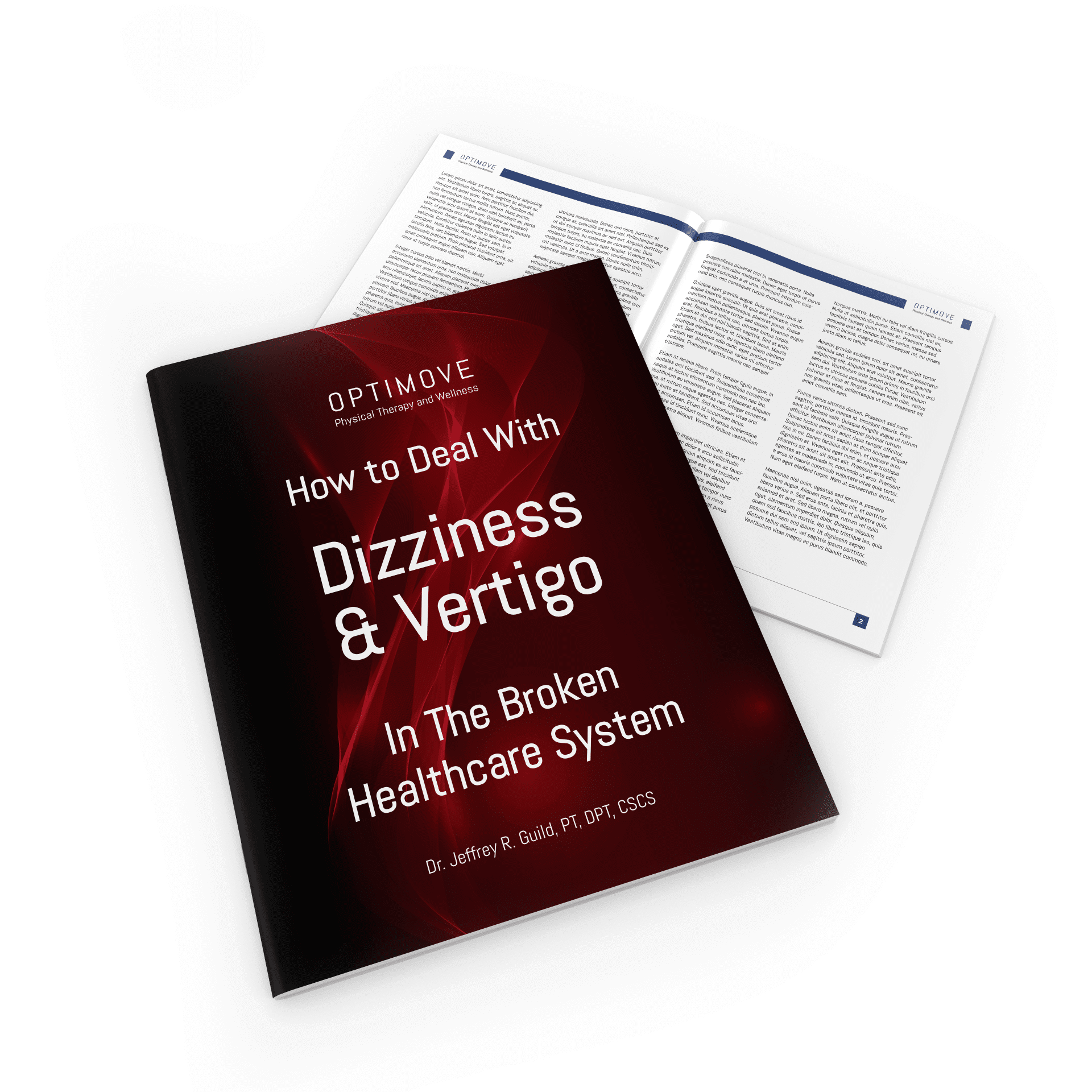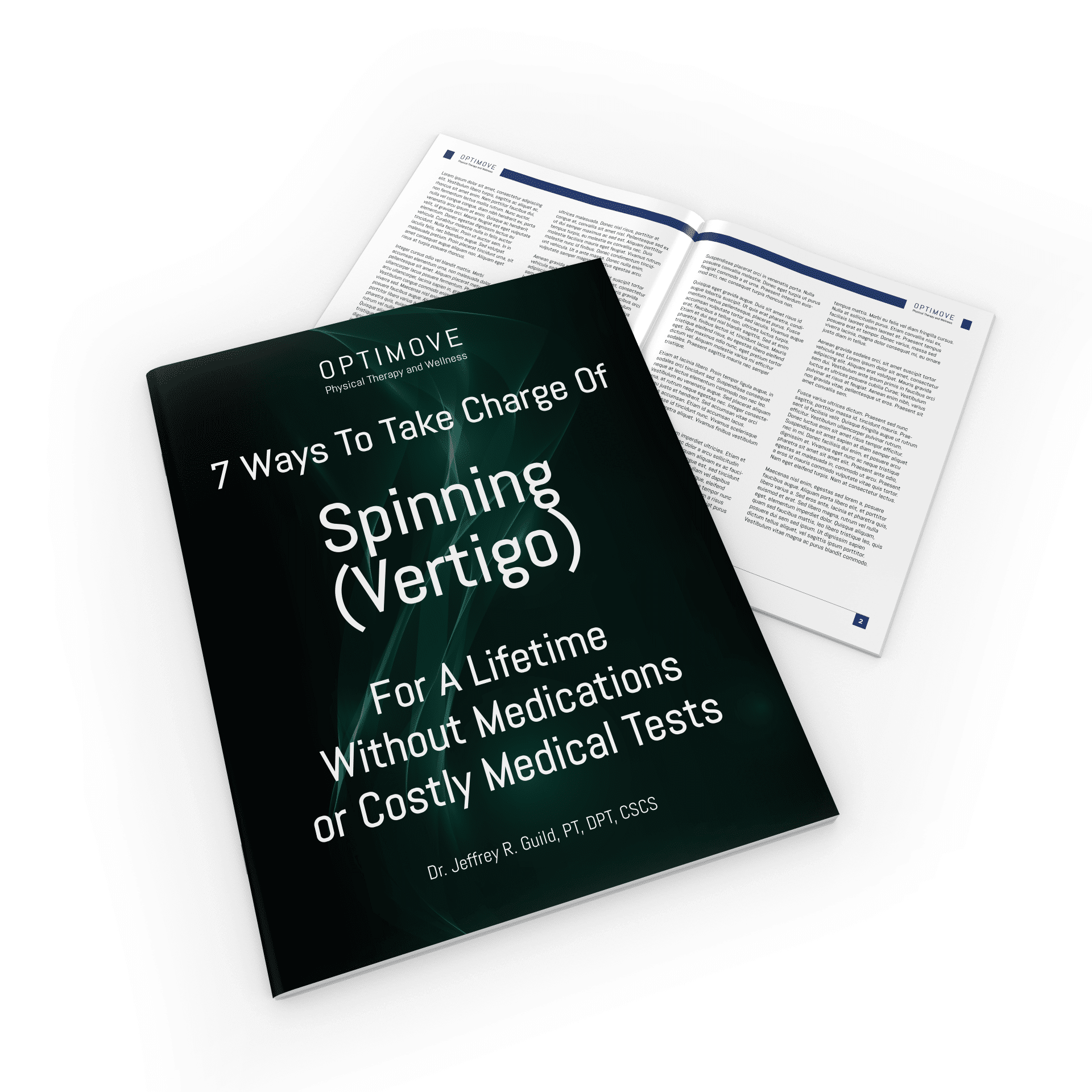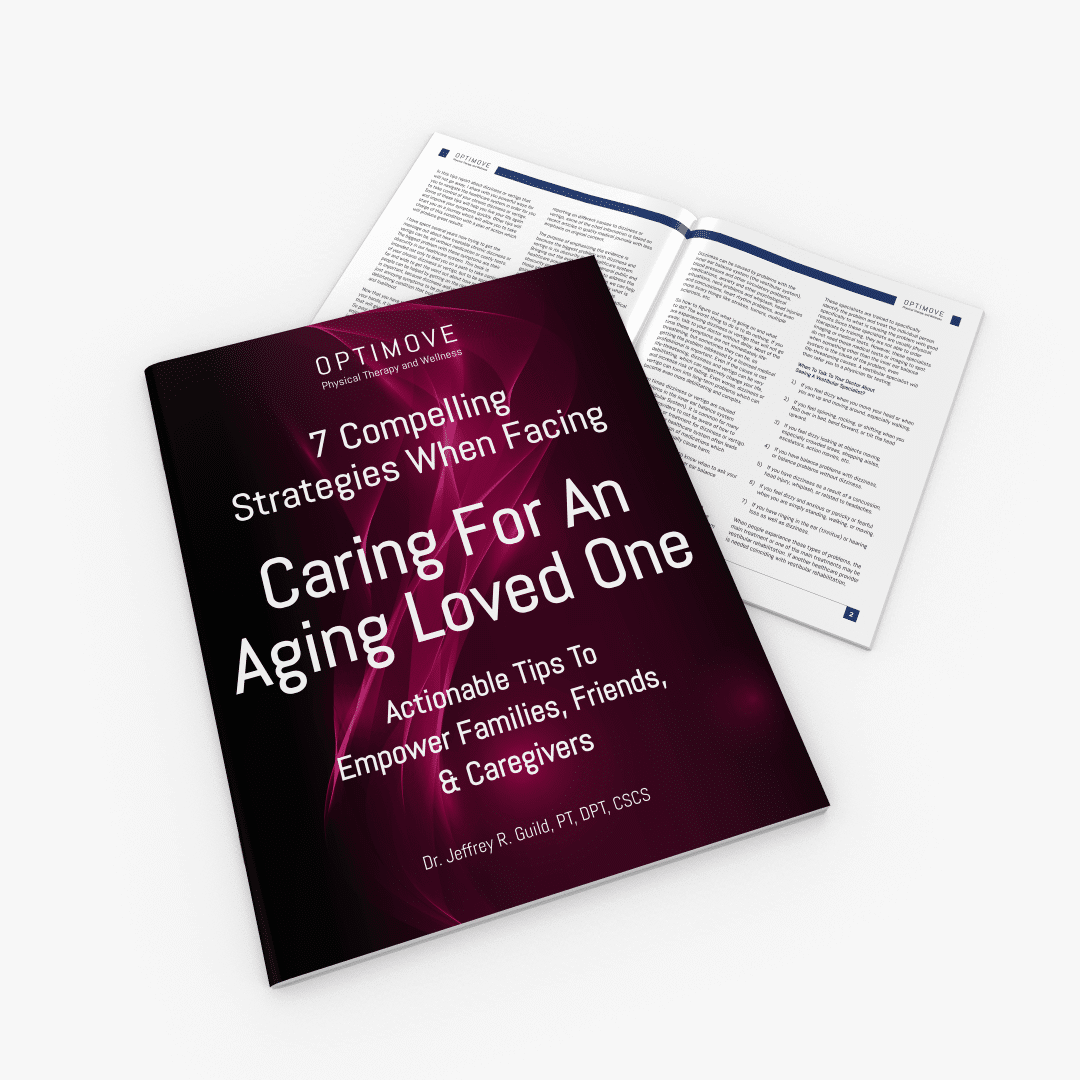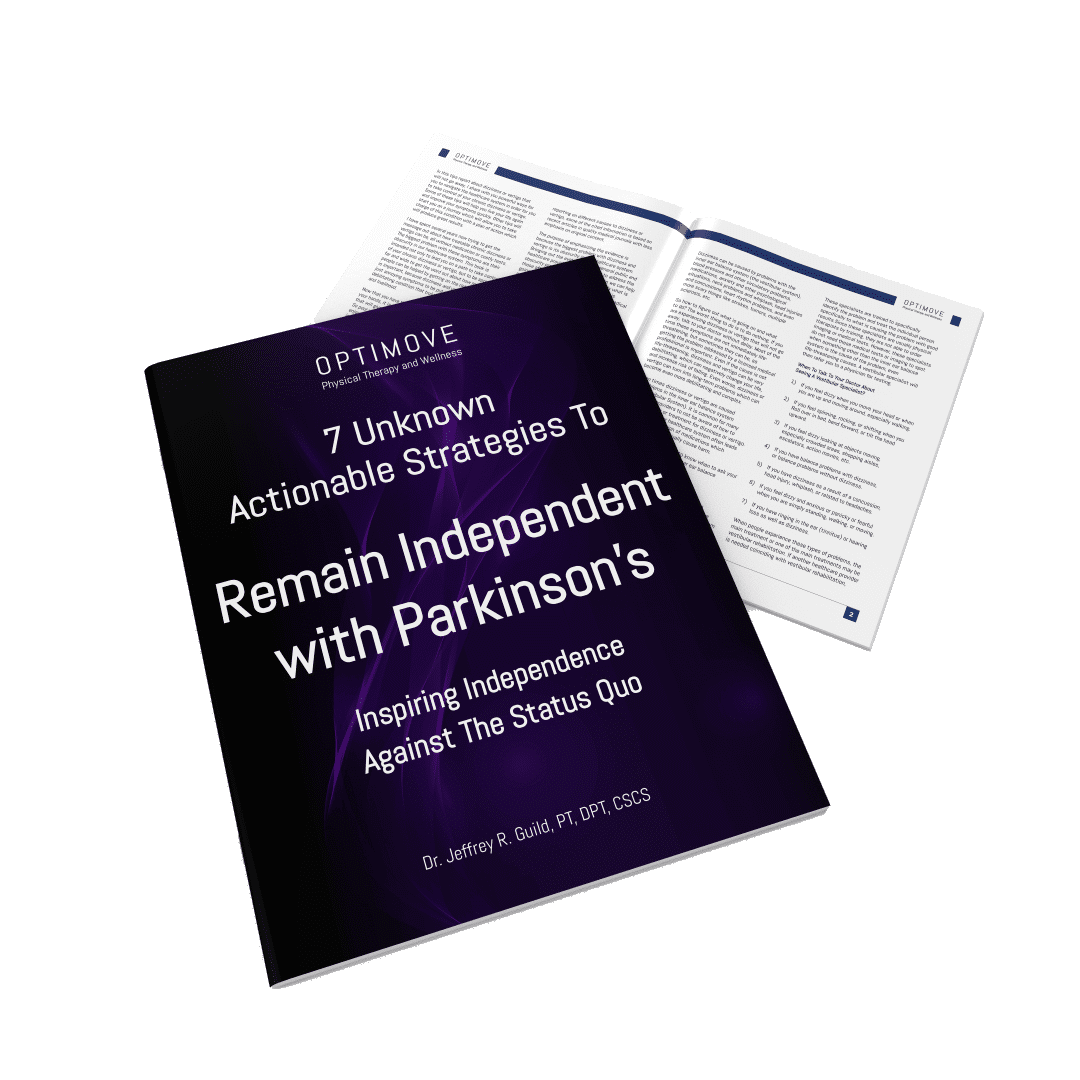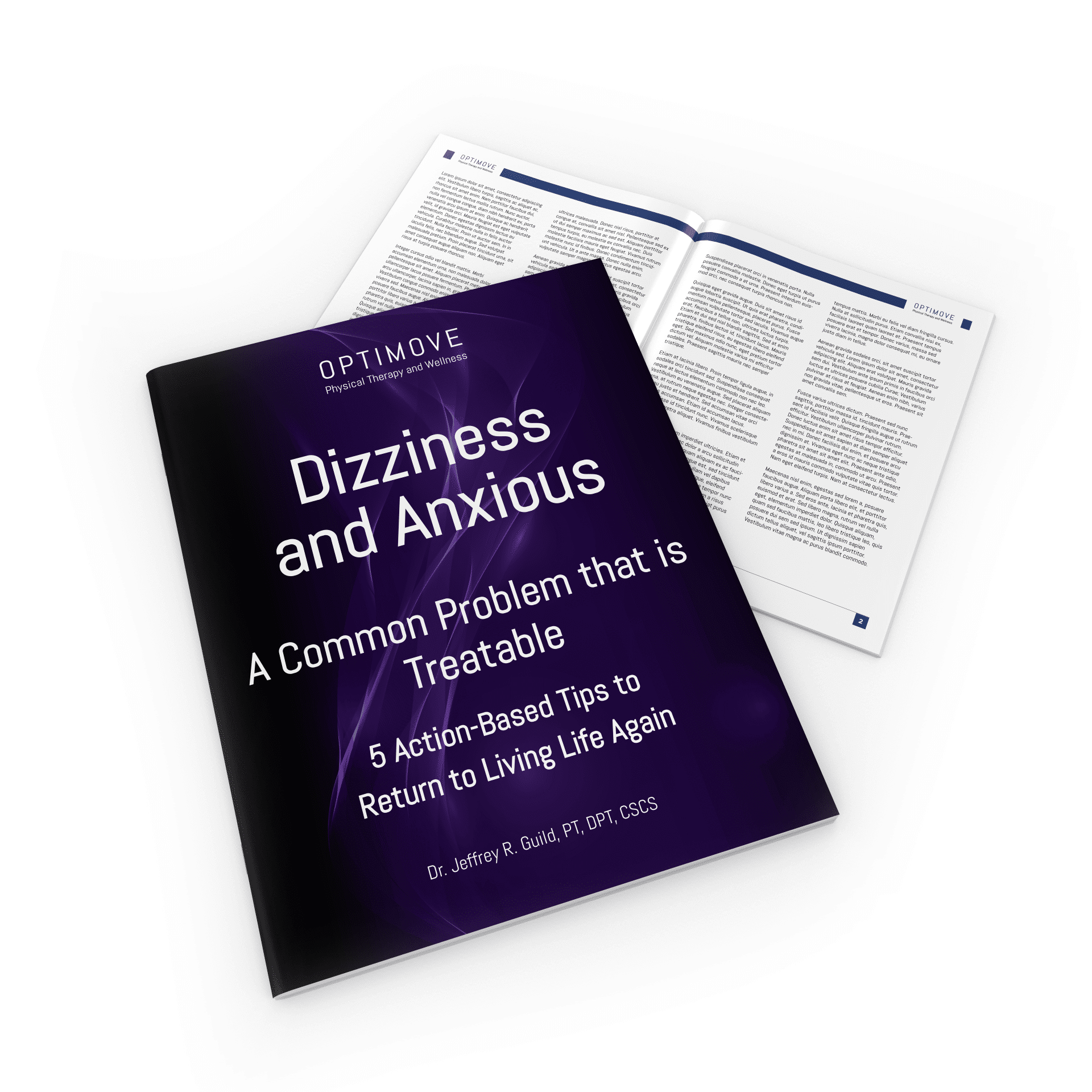Dr. Jeffrey Guild discusses the reasons behind muscle tightness, how it varies from person to person, and how stretching regularly can help alleviate it in a podcast episode.
He explains how physical activity, exercise, and posture can contribute to muscle tightness and suggests a combination of physical activity, exercise, and stretching to help alleviate it.
Dr. Guild also emphasizes the importance of being mindful of posture and taking breaks from sitting to prevent muscle tightness.
Do you or an aging loved one struggle with balance and falls? There is hope. Let us empower you to maintain your independence at home and in the community.
Click the link below to book your free in-home discover visit: https://old.optimovedfw.com/balanceandfallsfb
Speaker 0 (00:00:00) – So I got the question the other day, why do we tend to get tight muscles? And this is something that I hear quite a bit and people will often ask, okay, so is it because I exercise or is it because I don’t exercise? Or I thought if I exercise them, my leg muscles won’t get so tight. Or if I don’t exercise then I won’t get tight because then my muscles won’t develop and so they won’t get tight and that will be more flexible. So which one is it? And the answer is a little more complicated than one way or the other. So it’s important to recognize that each individual tends to get tight in certain muscles just based on the way that we’re built. So some of us have more tightness in the front of our legs and some of us have more tightness in the back of our legs or maybe a combination of both.
Speaker 0 (00:00:41) – And these patterns tend to get amplified more as we get older. And so then as we get older, of course, then the walking can be become problematic to where we have so much muscle tightness that it’s difficult to walk and it’s difficult to take nice long strides. It’s difficult to walk fast like we would compared to when we’re younger. So how, what to do about this and what are the patterns? What can be done? The best thing you can do overall is just stretching regularly and you don’t have to stretch every single muscle group. And yes, the textbook would say yes, stretch every major muscle group every single day. Who has the time to do that? It’s imp more important to figure out what muscles are tight on you as an individual and then address those on a regular basis. So for instance, my hamstrings in the back of my legs tend to be basically more tight.
Speaker 0 (00:01:25) – The muscles in the front of my legs don’t tend to get as tight, so I tend to focus more time stretching my hamstrings on a, on a regular basis. I don’t tend to stretch my in front of the legs very often, my quas and hip flexors and all that because they don’t tend to get as tight as often. Now the other component to this of course is what do we do for activity? What do we do for exercise? What do we do as far as posture? And that is a big influencer as well. So for example, myself, the muscles in the back of my legs, my hamstrings tend to be more tight. However, the muscles in the front of the legs do tend to get tight. If I’m doing more cycling, more bike riding or more running, then the muscles in the front of my legs do tend to get more tight.
Speaker 0 (00:02:06) – And so then I might have to start stretching those more on occasion just based on the level of physical activity doing and the type of physical activity that I’m doing. Now, let’s say if we’re not doing as much, we’re just living life, we’re walking around, we’re just kind of working and doing our daily life things, then our bodies tend to resort to the muscles that tend to naturally just be tight in general. But what also happens when we do things such as when we sit too much or when we do just various things that tend to from a postural perspective, create a muscle weakness and muscle tightness and things like that. So when we sit more, then that itself can develop certain tightnesses as well. So when we sit a lot, the muscles in the front of our legs tend to get more tight as well as actually the muscle in the back of our legs can get more tight as well, just by the way that the spine and the pelvis are lined when we’re sitting. And so the muscles in the front and the back of the legs can get actually
Speaker 1 (00:02:58) – Quite tight when we sit more often. So that’s one of the reasons why we’ve become quite inflexible when we’re sitting around a lot, even if we’re physically active, but we sit all day at work, but then we’re physically active outside of that, which is beneficial. But it’s important to be up and moving around as well, if at all possible. When we’re working, when we have those long stretches of time when we’re sitting down, you want to be standing up and moving around at least 30 minutes or or an hour or so and not just be sitting all day long. So the answer to the muscle tightness problem is a combination of both. Physical activity and exercise can cause muscle tightness depending on the type of physical activity and exercise that you’re doing. Whereas if you’re not exercising, that can cause muscle tightness as well because you’re just simply not moving as much and moving the muscles around as much and the muscles aren’t stretching and all that.
Speaker 1 (00:03:48) – So it can be a combination of both. It depends on how much exercise you’re doing and then what type of exercise that you’re doing. So running and cycling and things like that, it tends to create a lot of tightness both in the hamstrings, the frontal legs, and also the IT band, a big tendon on the side of the legs. And so that repetitive front to back motion tends to create very specific tightnesses. Whereas if we did a lot of side to side motion and that’s all we did, such as let’s say roller skates, hockey players, things like that, then that will create a certain type of muscle tightness sitting all day long creates a certain type of muscle tightness. So the muscle tightness is based on the type of exercise that we’re doing, the level of physical activity that we’re doing, or a lack of physical activity that we’re doing, or even the type of posture that we’re in.
Speaker 1 (00:04:35) – So how much are we sitting? How much are we standing upright? How much are we leaning forward? Are we a dentist or a surgeon? And we’re flex forward and going into this position like this all the time, which tends to create a lot of problems by the way, um, for herniated discs and all sorts of things. So what are we doing in our work life also that’s creating certain tightnesses and weaknesses and things like that, and especially muscle tightness. So I hope this helps. If you want more information just like this, click the link below, subscribe to our channel and look forward to giving you more great information that you can consume that’s related to this for yourself or someone that you love.


